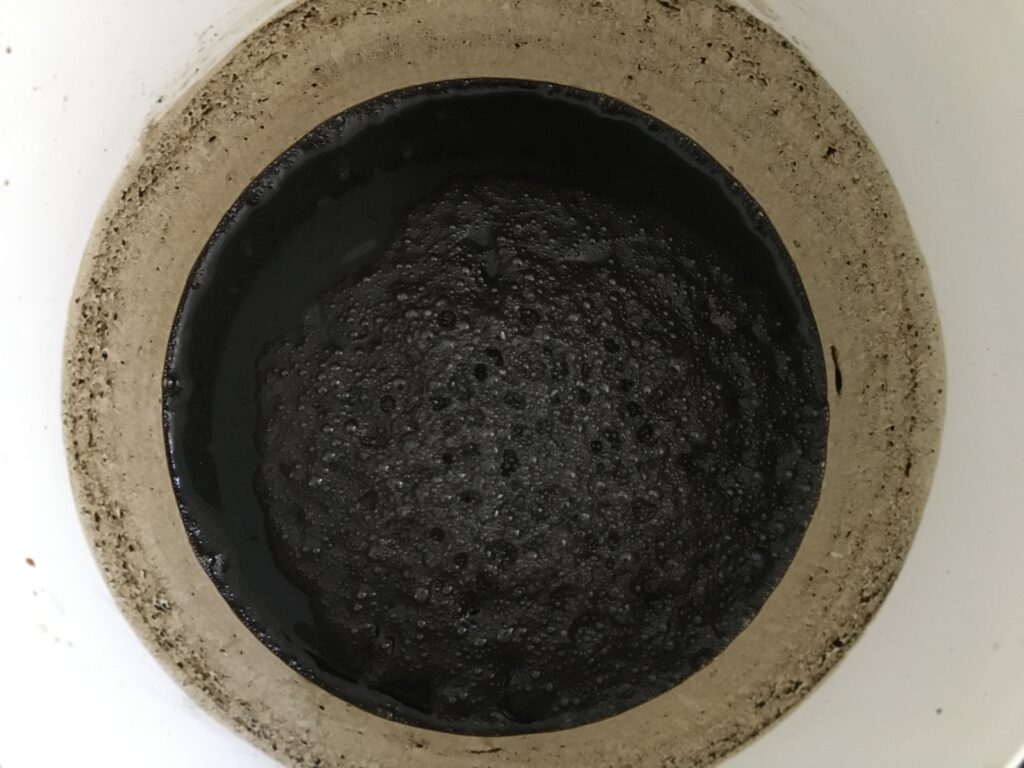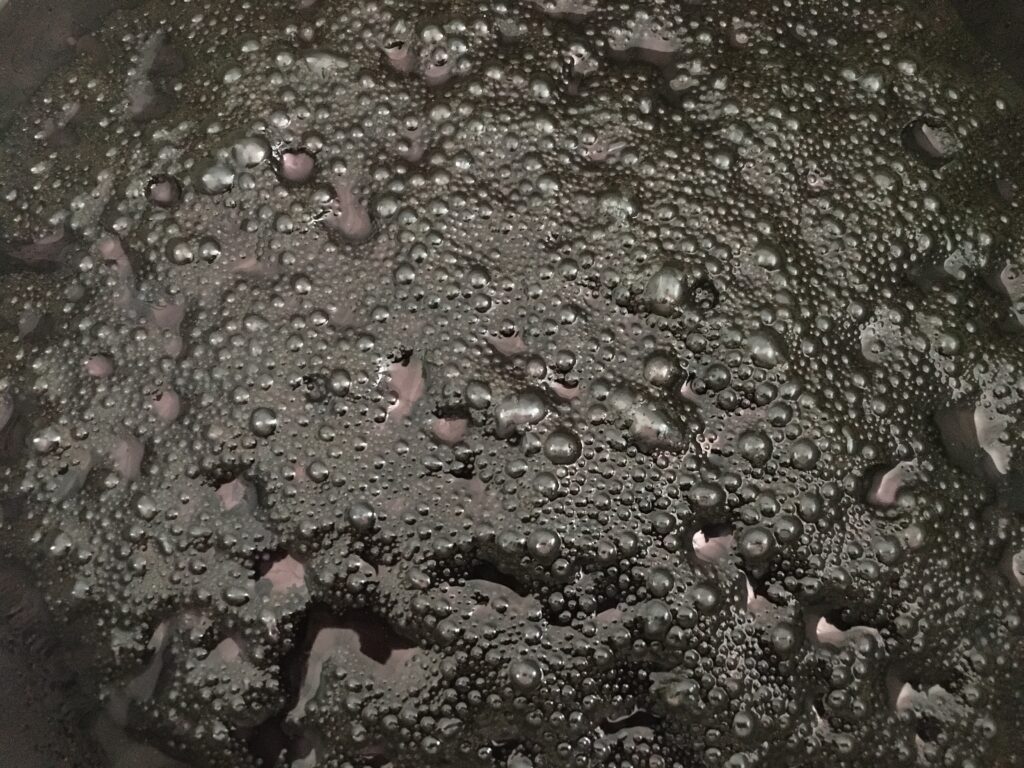





Indigo workshop with Mélanie at Elisabeet Garden
Diverse indigo techniques appeared across the world with slightly different methods and different plants being used to create the al-chemy of indigo. Knowing is not uniform, a similar desire – for the colour blue – can lead to invention, even without knowing exactly what you are doing. When indigo processes developed, there was no science of chemistry: indigo, which is the only natural blue dye, is emblematic of the diversity of knowing, and the power of unknowing which revealed itself through indigo.
We talk about the smell of the indigo and try to describe it. Again, it’s something that demonstrates the diversity of our bodies, senses and cultural context. She tells us that there is a phase where the indigo smells of ‘tzuuun’ – an onomatopeic smell – and I can immediately grasp what she means.
I really wanted to try the stirring of the vat, which Mélanie says has a particular dymanic and rhythm. I’m wondering if the feel of the liquid will guide my arm as I insert the stick and try to mimic what I saw in the video with my body.
I remember the conversation that Mika and I had which was at the beginning of our residency when a carton of soy milk went bad. As soon as I picked it up to make the coffee I sensed that there was something wrong with it. It just didn’t feel like the correct weight. My senses were right because within a day the milk had begun to go off and turn into tofu. An unknown process was making itself known in this very minor way. From the soy milk turning bad, I’m beginning to trust my subtle senses.